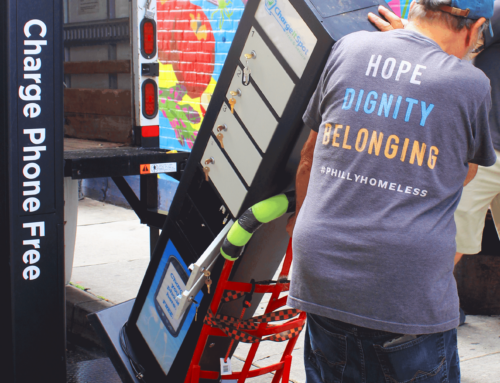Interview with Jeff O’Neill, Senior Facilities Director at Penn Medicine

ChargeItSpot partners with a variety of retailers, stadiums and public venues to provide free phone charging stations for their customers and visitors. One of the venues we’re most honored to serve is hospitals. Hospital visits are often a stressful experience for patients and their loved ones and maintaining a constant connection to the outside world is absolutely critical. That’s why our charging stations are servicing numerous hospitals and medical centers, including the Penn Medicine hospitals in Philadelphia, where ChargeItSpot is based.
We recently sat down with Jeff O’Neill, Senior Facilities Director at Penn Medicine, to discuss the need for phone charging in hospitals, Penn Medicine’s historical facilities, and how his background in architecture informs how he runs the facilities at the nation’s first hospital.
Why did you choose to install ChargeItSpot phone charging stations at Penn Med hospitals?
We identified the need for charging devices for the families of our patients, and our staff, in a more public area.
What has been the biggest surprise in terms of performance or usage since installing the charging kiosks at the hospitals?
How often they are used! I am continually impressed at the number of interactions we have at each kiosk. The more public areas, such as our Liberty Lounge for surgery patient / family waiting, and Café 1751, are particularly seeing many instances of use.
The word “hospital” originally comes from the Latin noun “hospes” which stands for “a guest or visitor” and “one who provides lodging or entertainment for a guest or visitor.” In what ways does the University of Pennsylvania Health System provide hospitality to patients and visitors?
Unlike a hotel or vacation destination, people come to hospitals under a variety of stresses around their care, or care for their loved ones. Our hospitality is geared to provide a combination of convenience and comfort. Charge-It-Spot helps with convenience to have them available close by in public areas.
Penn Medicine’s Pennsylvania Hospital is the nation’s first hospital. What are some of the interesting historical facilities at Penn that have been maintained over the years?
We are particularly proud that the Historic Pine Building remains a functioning part of the hospital. Although no direct patient care occurs within its walls anymore, hospital leadership and providers still have offices and collaboration space there. The Pine Building serves as a very tangible reminder of our history of patient care for over 200 years.
How has your background in architecture informed your approach to managing the hospital network’s facilities?
Architects, as part of their licensure, pledge to protect the health, safety and welfare of the public through the built environment. I cannot think of a better way of being directly involved in that mission than working at a hospital, but build and maintain spaces where people come to get better and to begin the healing process.






